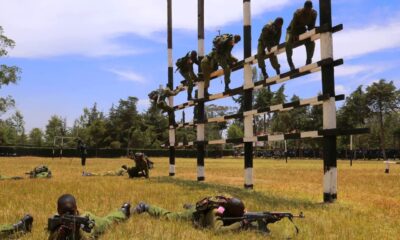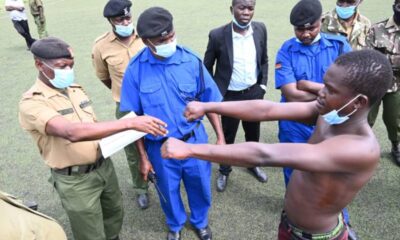Kenya and Tanzania have commenced a joint reaffirmation of their shared border from Lake Victoria to the Indian Ocean.
Officials want to ensure that the boundary is visibly marked on the ground by erecting pillars.
The work will be done in six phases.
The sections are from Mwishoni (Lake Victoria) to the Mara River (118km); the Mara River to Lake Natron (120 km); Lake Natron to Namanga (110km); Namanga to Oloitoktok/Tarakea (110km); Oloitoktok to Lake Jipe and the land boundary of Ruvu Pangani (100km); Lake Jipe to Karuma Hills (90km); and Karuma Hills to Vanga (110km).
Ms Lucy Mburu, a deputy director at the Department of Survey, said the process will cover about 760km.
She said destroyed pillars will be re-established and new ones erected. A new agreement will also be drafted to replace old colonial-era ones.
Speaking at a public forum in Mausa, Narok South sub-county, Narok County Commissioner Evans Achoki said the pillars will be made up of iron rods, binding wire, cement, sand and ballast.
“The pillars will be erected at a distance of 250 metres and 500 metres to mark the limits of the respective territory and the local communities will be involved in the reaffirmation exercise as they will be responsible for providing labour and supplying construction materials,” Mr Achoki said.
Joseph Rotich, a surveyor at the Kenya International Boundaries Office, said geographical names, features and public utilities located up to two kilometres on both sides of the border will be listed by the cartographic team.
Earn an income
“The joint cartographic team will cover the entire expanse of the international boundary by visiting all the villages within all the sub-locations touching the international boundary and interviewing various people to gather information,” he said.
The community, he said, will be involved in building the pillars so that they can earn an income. Locals will also help maintain the boundary markers.
“One side of the pillar will be marked ‘KE’, representing the republic of Kenya, whereas the other side facing Tanzania will be marked ‘TZ’,” he said.
The process will also help demystify the pillars, as many locals mistakenly believed that mineral resources, such as mercury, existed beneath the markers, which is why many were destroyed.

Sign up for free AllAfrica Newsletters
Get the latest in African news delivered straight to your inbox
Success!
Almost finished…
We need to confirm your email address.
To complete the process, please follow the instructions in the email we just sent you.
Error!
There was a problem processing your submission. Please try again later.
This is one of the reasons officials are including local communities in the process, as they get to witness first-hand how international boundaries are marked. The communities will also be responsible for protecting and maintaining the pillars for eternity.
Mr Joseph Mutorongo, a lands officer from Tanzania, said the two countries will collaborate to ensure the process is smooth.
Residents were invited to offer their views and to be reassured that the boundary does not bar them from their usual interactions but exists to mark the territories of the two countries.
“Residents will continue intermarrying, doing trade and other businesses as usual. The reaffirmation exercise doesn’t disrupt the lifestyles of the border communities,” Mr Achoki said.
The pillars, he said, will be painted white to make them visible but in the Maasai Mara/Serengeti wildlife reserves the markers will be set up to blend with the environment.

 General News1 week ago
General News1 week ago
 General News1 week ago
General News1 week ago
 General News1 week ago
General News1 week ago
 General News7 days ago
General News7 days ago
 General News1 week ago
General News1 week ago
 Jobs7 days ago
Jobs7 days ago
 General News6 days ago
General News6 days ago
 Sports6 days ago
Sports6 days ago


